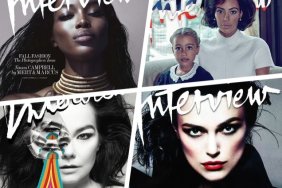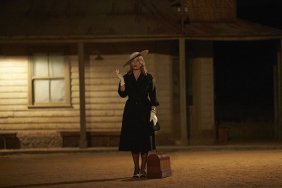The love so many of us have for fashion often ties into a longing for fantasy, something I couldn’t help but think about a few weeks ago when I attended a ballet performance in honor of Natalia Makarova at Lincoln Center. Marcelo Gomes, Natalia Osipova, Gillian Murphy, Ivan Vasiliev, and Diana Vishneva were just a few of the dancers from some of the biggest ballet companies in the world to perform and it was truly breathtaking to see them glide across the stage. It takes an unimaginable amount of strength for the dancers to appear feather-light, which makes expertly fitted costumes all the more important. I had the chance to speak with Caryn Wells, the costumer for Youth America Grand Prix and the supervisor in charge of Principal Ladies Wardrobe for American Ballet Theatre for the past 15-plus years about the unique challenges designing for the ballet presents, what the “average woman” might find appealing in a ballet shop, what ballerinas wear to practice, and more.
The Fashion Spot: As a costume designer, what in particular appeals to you about working with a ballet?
Caryn Wells: Ballet offers a unique set of challenges in that costumes have to look as though they are delicate and ethereal, but must be built to support rigorous movement and withstand a great deal of wear and tear. Just like dancers themselves, ballet costumes must be a beautiful dichotomy of beauty and strength. I love the challenge of making something that not only allows them the freedom to do what is required of them technically, but also visually enhances the dancers performance.
tFS: Ballet flats have been a staple for a few seasons now, as have leotards, what’s your take on ballet-inspired fashions?
CW: Dancers are, in many ways, a romantic and physical ideal. The desire to capture a bit of that magic is impossible to resist. So much of what crosses over into fashion is worn for the same reason it works for dance — it’s comfortable, and it generally shows a body off to its best advantage. Ballet flats are a perfect example: they are super comfortable, chic, and go with almost anything.
tFS: Are there any pieces of clothing or accessories that “an average person” might find appealing to wear if they were to shop in a ballet store?
CW: Absolutely! What I always find most appealing are the knits. The soft, lightweight wraparound sweaters dancers layer over their leos are just beautiful, as are the shawls and neck warmers. The colors you find in dance stores are also inspiring. Though colorways in dance seem to keep fairly current with fashion, the combinations you see when combined with more ‘traditional’ dancewear colors can be quite amazing.
tFS: What does the typical ballerina wear when she’s practicing?
CW: Rehearsal clothing general consists of many layers, so the dancer has the ability to remove pieces as she warms up, or as a rehearsal becomes more active. The base layer almost always consists of a leotard and tights (worn over the leotard), and flat or pointe shoes. On top of that, there are usually leg warmers, a sweater or fleece (or both), and a skirt of some kind. It can range from a knit shawl tied around their hips, to a fluttery chiffon wrap or full-blown rehearsal tutu, depending on both the dancer, and the piece they are rehearsing.

tFS: What did you think about the costumes in Black Swan?
CW: I loved the costumes in Black Swan! In fact, some of them were from my company, the American Ballet Theatre. Many of the principal costumes that were designed by Rodarte were built by a company called Primadonna in California that’s run by a good friend of mine. She is brilliant and she’s the one I always turn to build my designs! It was wonderful to see her work on the big screen, as opposed to on stage. Rodarte did a great job balancing honesty in dancers clothing with the right mix of movie fantasy.
tFS: What are some of the biggest challenges in outfitting a ballet company?
CW: Money! Always money. The arts are notoriously underfunded, and dance companies are certainly no exception. That being said, costumes generally have to last for many years, often longer than the dancer who wears them! A lot of what costumers face is getting clothes to fit and perform on bodies that they weren’t made for. Maintenance is also always a big issue. So many of the fabrics that are used in dance are delicate, and it takes a careful hand to make alterations and repairs that don’t compromise the integrity of either the fabric or design.
tFS: Most people want to focus on the dancers’ feet when at the ballet, how does that come into play when you’re working on costume design?
CW: If you’re working on something that’s meant to be of a certain period, many times you will have to shorten a skirt or add a slit or panel to allow for movement and the feet to be seen. For that reason, truly historically accurate costumes are seldom seen at the ballet. For the most part, most period pieces are done ‘in the style of’ a particular era, as opposed to an exact replica. The tutu itself came into being to better show off footwork, progressively getting shorter until we ended up with what we recognize today.
tFS: Given that many of the ballets you worked on have been performed for decades now, how to you go about ensuring that your costumes stand out?
CW: This is a very delicate balance to achieve. Certain ballets are held in trust and the trust requires that costumes comply to a design. The same trust must approve all recreations and can refuse to allow a performance to go on if costumes are not of a certain caliber. Other ballets that are very well known, but are not held in trust or are being re-choreographed give you a bit more leeway. So much of dance is a collaboration — you really have to take what the choreographer and/or artistic director are hoping for, what the dancer needs in order to develop their character, and of course, what your budget can handle. All that being said, my focus almost always starts with fit. No matter how beautiful something is, how many rhinestones it has on it, if the fit is bad, it’s going to look shoddy. If it fits well, it automatically looks better, no matter what the design.
My other secret weapon is a headpiece. If you have the right one, it can really finish a costume in a way that nothing else can. headpieces can also be a bit more innovative, even if your basic costume has to stay fairly traditional.






